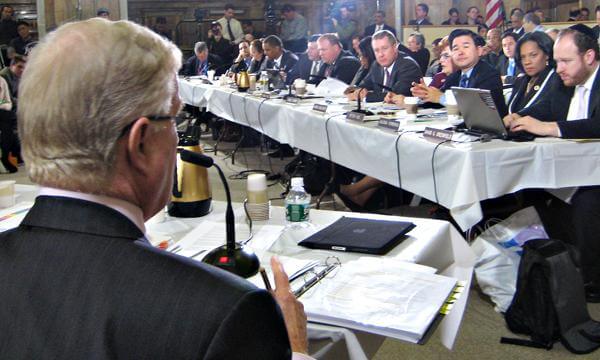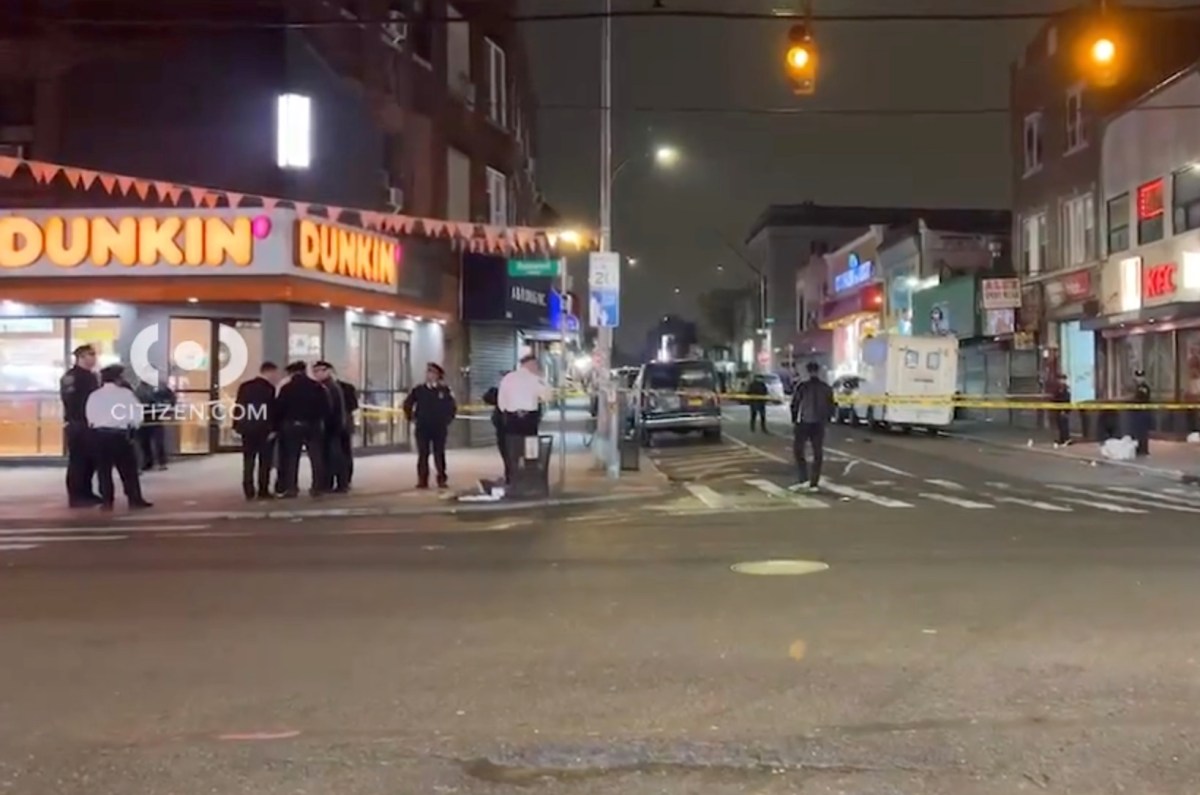By Connor Adams Sheets
The City Council Monday held the first of a series of what are expected to be contentious hearings into the city’s slow response to last month’s blizzard.
The packed event in Manhattan was the first chance Council members have had to publicly and directly question and chide city officials regarding their handling of the storm, which Mayor Michael Bloomberg has described as “inadequate” and “unsatisfactory.”
A focal point of the inquiries was the city’s failure to quickly and sufficiently address the snow removal needs of the outer boroughs, including those of Queens, which had many unplowed streets several days after the snow stopped falling, multiplying emergency response times and leaving thousands of residents stranded.
“At some point you’ve got to realize they weren’t plowing,” City Councilman Peter Vallone (D-Astoria), chairman of the Council Public Safety Committee, told city Sanitation Commissioner John Doherty during a heated exchange. “They may have been on the highways, they might have been in Manhattan, but they weren’t in Queens, they weren’t on Staten Island, they weren’t in Brooklyn.”
Doherty, Deputy Mayor of Operations Stephen Goldsmith, city Fire Commissioner Salvatore Cassano and city Office of Emergency Management Commissioner Joseph Bruno made up the public face of the Bloomberg administration at the hearing, from which the city’s first-in-charge was conspicuously absent.
The officials recounted the events that transpired in the days before, during and after the storm, repeatedly admitted mistakes and failures the administration will try to avoid the next time around and found themselves defending their continuing to hold onto their jobs.
They also presented a detailed outline for ensuring that the city is not left out in the cold during future severe weather events.
“Today’s hearing will ensure the city learns the right lessons from this painful experience,” Goldsmith said during lengthy opening remarks. “We didn’t do the job New York City residents deserve … Mayor Bloomberg and I are fully committed to understanding what went wrong and addressing those issues.”
Goldsmith then presented a six-part, itemized breakdown of key areas where “the city’s response was inadequate”:
1. The decision not to declare a snow emergency.
2. A lack of “accountability tools” that would have allowed the city to track its response efforts in real-time and to adjust accordingly.
3. Insufficient and delayed deployment of city assets.
4. Failure to procure and deploy sufficient private resources, such as private tow truck operators.
5. Insufficient internal and external communication.
6. Problems with emergency communications and response.
The outline also detailed the city’s plans to address the issues through a litany of changes, such as technological upgrades, improving communications and improving its ability to quickly deploy resources.
The city’s failure to declare a snow emergency and its delayed opening of the city’s command center for many hours angered many Council members, as they believe those decisions were the root cause of many other problems and that they reflect on the administration’s failure to fully and speedily acknowledge the severity of the storm and respond to it accordingly.
“I appreciate the recognition that the failure to declare an emergency or a snow emergency, which was well within the mayor’s ability, was a mistake,” Council Speaker Christine Quinn (D-Manhattan) said. “On Dec. 25, when [the National Weather Service] declared a blizzard watch, was the time when we should have gone to looking at a snow emergency.”
Goldsmith admitted that making such a declaration “could have yielded a better response” and said that the city is evaluating new protocols for assessing when to do so.
Councilwoman Elizabeth Crowley (D-Middle Village), chairwoman of the Council Fire & Criminal Justice Committee, effectively called for more administration heads to roll as a result of the storm’s mismanagement. So far, only one top official, John Peruggia, chief of the FDNY’s Emergency Medical Service, has been demoted and none have been fired in the snowstorm’s wake.
“The responsibility to declare a snow emergency does not fall on his shoulders, so why is he the only one who got the demotion? Why is he the fall guy?” she asked the administration panel, which did not say whether there would be any additional demotions or firings.
Another major focus of the hearing was on the storm response’s impact on emergency response times. The normal average response time to the most severe 911 calls — including cardiac arrest and choking — is under six minutes, according to Bruno. During the height of the storm, he said, average response times were as high as 55 minutes, a result in large part of unplowed streets causing more than 100 incidences of ambulances being stuck in snow en route to or from an emergency.
Bruno said he established a task force to look into how best to free stuck ambulances many hours later than he should have, exacerbating the problem.
“We did not have enough tow trucks. And tow trucks and plows were not sufficient. We needed front-end loaders … to free ambulances,” he said. “We needed to immediately free abandoned and stuck ambulances. We did not establish a task force quickly enough.”
Reach reporter Connor Adams Sheets by e-mail at csheets@cnglocal.com or by phone at 718-260-4538.































